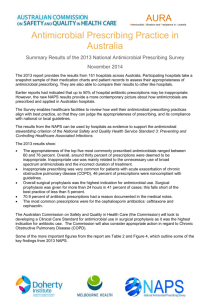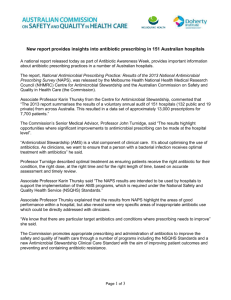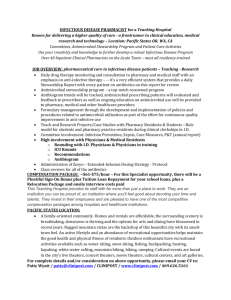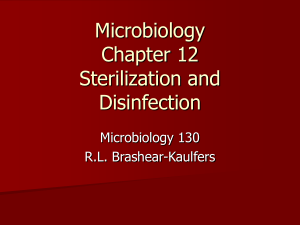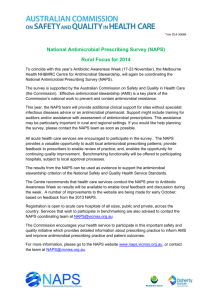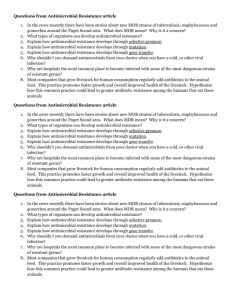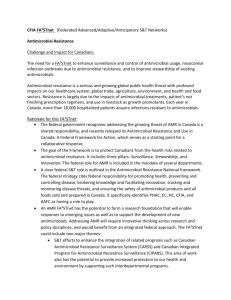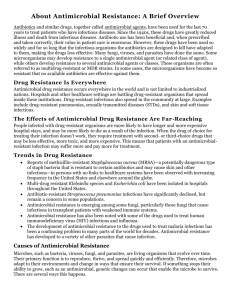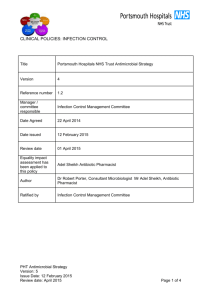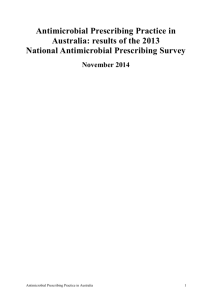Media-Release-Latest-report-on-antibiotic-prescribing-in
advertisement
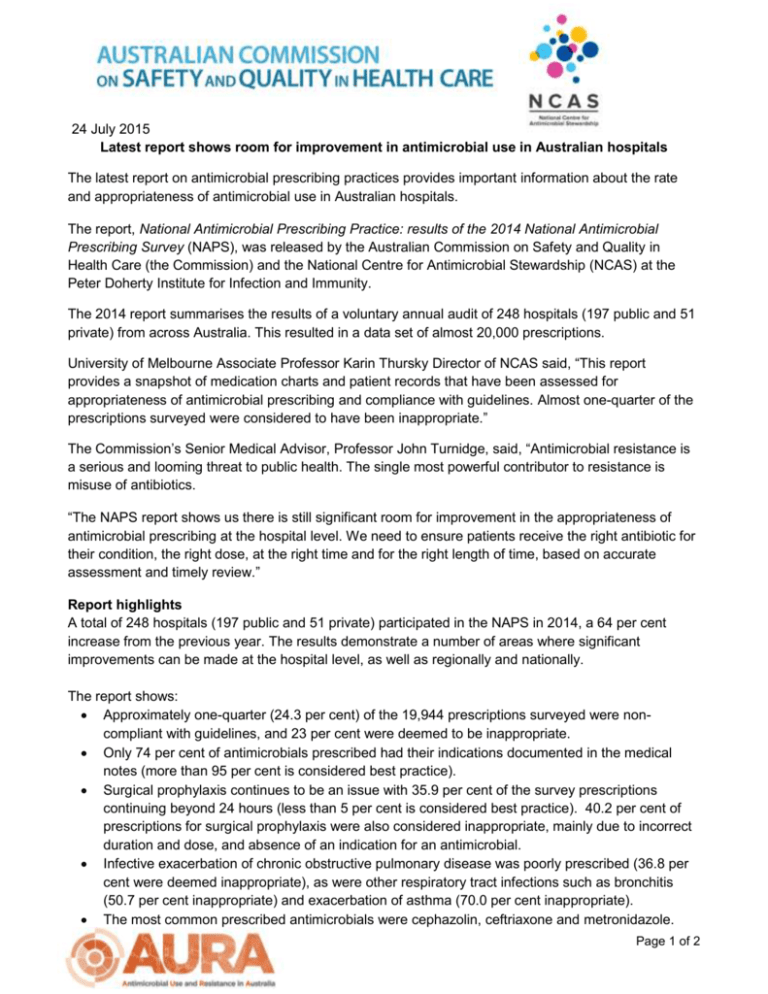
24 July 2015 Latest report shows room for improvement in antimicrobial use in Australian hospitals The latest report on antimicrobial prescribing practices provides important information about the rate and appropriateness of antimicrobial use in Australian hospitals. The report, National Antimicrobial Prescribing Practice: results of the 2014 National Antimicrobial Prescribing Survey (NAPS), was released by the Australian Commission on Safety and Quality in Health Care (the Commission) and the National Centre for Antimicrobial Stewardship (NCAS) at the Peter Doherty Institute for Infection and Immunity. The 2014 report summarises the results of a voluntary annual audit of 248 hospitals (197 public and 51 private) from across Australia. This resulted in a data set of almost 20,000 prescriptions. University of Melbourne Associate Professor Karin Thursky Director of NCAS said, “This report provides a snapshot of medication charts and patient records that have been assessed for appropriateness of antimicrobial prescribing and compliance with guidelines. Almost one-quarter of the prescriptions surveyed were considered to have been inappropriate.” The Commission’s Senior Medical Advisor, Professor John Turnidge, said, “Antimicrobial resistance is a serious and looming threat to public health. The single most powerful contributor to resistance is misuse of antibiotics. “The NAPS report shows us there is still significant room for improvement in the appropriateness of antimicrobial prescribing at the hospital level. We need to ensure patients receive the right antibiotic for their condition, the right dose, at the right time and for the right length of time, based on accurate assessment and timely review.” Report highlights A total of 248 hospitals (197 public and 51 private) participated in the NAPS in 2014, a 64 per cent increase from the previous year. The results demonstrate a number of areas where significant improvements can be made at the hospital level, as well as regionally and nationally. The report shows: Approximately one-quarter (24.3 per cent) of the 19,944 prescriptions surveyed were noncompliant with guidelines, and 23 per cent were deemed to be inappropriate. Only 74 per cent of antimicrobials prescribed had their indications documented in the medical notes (more than 95 per cent is considered best practice). Surgical prophylaxis continues to be an issue with 35.9 per cent of the survey prescriptions continuing beyond 24 hours (less than 5 per cent is considered best practice). 40.2 per cent of prescriptions for surgical prophylaxis were also considered inappropriate, mainly due to incorrect duration and dose, and absence of an indication for an antimicrobial. Infective exacerbation of chronic obstructive pulmonary disease was poorly prescribed (36.8 per cent were deemed inappropriate), as were other respiratory tract infections such as bronchitis (50.7 per cent inappropriate) and exacerbation of asthma (70.0 per cent inappropriate). The most common prescribed antimicrobials were cephazolin, ceftriaxone and metronidazole. Page 1 of 2 The 2014 NAPS Report is available for download from the Commission’s website on http://www.safetyandquality.gov.au/national-priorities/amr-and-au-surveillance-project/nationalantimicrobial-prescribing-survey-naps/. Australian Commission on Safety and Quality in Health Care The Commission is the lead agency for the development and coordination of national improvements in safety and quality in health care across Australia. The Commission aims to support health care professionals, organisations and policy makers who work with patients and carers. The Commission promotes appropriate prescribing and administration of antibiotics to improve the safety and quality of health care through a number of programs including the NSQHS Standards and the Antimicrobial Stewardship Clinical Care Standard with the aim of improving patient outcomes and preventing and containing antibiotic resistance. As one of the key elements of Australia’s National Antimicrobial Resistance Strategy 2015-2019, the Commission is developing a national surveillance system for antimicrobial use and resistance. The Antimicrobial Use and Resistance (AURA) Surveillance System will systematically collect, analyse and respond to rates of resistance and antimicrobial use. National Centre for Antimicrobial Stewardship The National Centre for Antimicrobial Stewardship (NCAS) at the Peter Doherty Institute for Infection and Immunity is a multidisciplinary collaborative funded by the National Health and Medical Research Council and founded in partnership with The University of Melbourne, the Royal Melbourne Hospital and Monash University to investigate the patterns of antibiotic usage in humans and animals, identifying inappropriate consumption and over prescription, to ultimately determine successful interventions and decrease the prevalence of antibiotic resistant bacteria. The core work of NCAS will be dominated by six streams of research over the next five years, four related to antimicrobial prescribing in humans and two streams dedicated to animals. This One Health approach will form part of the National Antimicrobial Resistance Strategy 2015-2019. MEDIA INQUIRIES Erica Hall, Australian Commission on Safety and Quality in Health Care (02) 9126 3600 or erica.hall@safetyandquality.gov.au Rebecca Elliott, NCAS at The Peter Doherty Institute for Infection and Immunity (03) 8344 8360 or Rebecca.Elliott@unimelb.edu.au NAPS was funded by the National Health and Medical Research Council, with additional support from the Australian Commission on Safety and Quality in Health Care, through the AURA Project. Page 2 of 2

